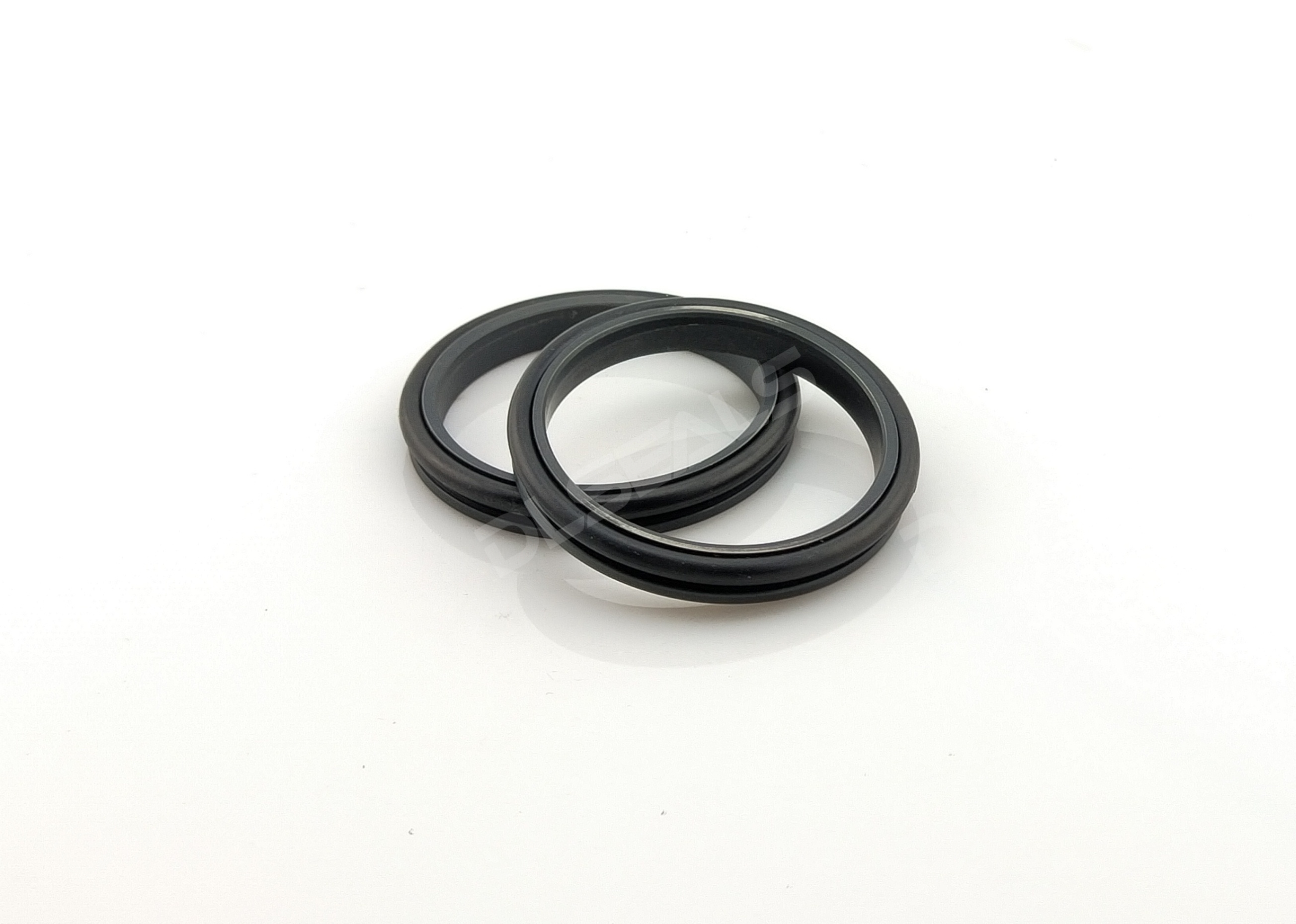Within the drive systems of construction machinery, mining equipment, and agricultural machinery, floating seals (Floating Seals) act like precisely engineered “pressure-adaptive armor.” With their unique twin-ring floating structure, they safeguard the integrity of slewing rings and final drives in harsh environments filled with mud, gravel, and high-pressure impacts. Comprising two metal rings and special rubber, this sealing device, with its dynamic gap adjustment capability at the 0.01mm level, has become an irreplaceable core sealing technology for heavy-duty equipment.
I. Structural Principle: The Art of Sealing Through Geometry and Mechanics
**▌ Trio of Core Components**
| Component | Material | Function |
|---|---|---|
| Metal Seal Ring | Surface-hardened high-carbon steel (HRC≥60) | Forms the primary sealing band via precision-lapped end faces |
| Rubber O-Ring | Oil-resistant fluoroelastomer (FKM) | Provides axial elastic force + secondary sealing barrier |
| Housing Groove | Ductile iron (QT500-7) | Constrains the floating range (±0.5mm) |
**▌ Sealing Mechanism**
- Twin-Ring Axial Compression: The two metal rings are pressed together at their end faces by the elastic force of the O-rings, forming a primary sealing band only 0.2-0.5mm wide.
- Dynamic Compensation: During equipment vibration or shaft eccentricity, the metal rings float radially within the housing groove to compensate for deviations (maximum compensation angle ±1.5°).
- Self-Cleaning Effect: The formation of a micron-thick oil film on the rotating end faces creates a “liquid barrier seal” while simultaneously expelling invading particles.
II. Performance Advantages: Five Breakthroughs Beyond Traditional Seals
- Extreme Pressure Resistance
- Sealing end face contact pressure: **>15 MPa** (Traditional lip seals <3 MPa)
- Typical Case: 100-ton mine truck wheel hub reducer, withstands axial impact load of 80kN per side.
- Ultra-Wide Temperature Range Adaptability
- Maintains elasticity and plasticity within -40°C to 220°C (Specific HNBR compound solution).
- Thermal Differential Compensation: Expansion differences absorbed via floating gap (Cast iron housing vs. steel seal ring ΔCTE = 4×10⁻⁶/°C).
- Zero Penetration in Mud/Water Environments
- Operates continuously for 3000 hours in mud with 15% solids content without leakage (Complies with ISO 6194 contamination resistance testing).
- Comparison Data: Average lifespan of traditional seals is only 400 hours under identical conditions.
- Lifetime Maintenance-Free Design
- Labyrinth-type oil reservoir structure enables single oil fill for the entire machine life cycle (typically 10,000+ hours).
- World Record: Caterpillar D11 bulldozer final drive floating seal operated continuously for 23,000 hours.
III. Pushing Limits: Frontier Technology Research Directions
**▌ Material Upgrade Battle**
| Problem | Innovative Solution | Technical Effect |
|---|---|---|
| Micro-movement wear of metal rings | Laser cladding of Tungsten Carbide (WC-17Co) on end faces | Wear resistance increased by 300% |
| Thermal aging/cracking of O-rings | Perfluoroelastomer (FFKM) + Graphene reinforcement layer | Temp resistance to 260°C, lifespan 5x longer |
| O-ring deformation at high speed due to centrifugal force | 3D hydrodynamic profile structure (ANSYS topology optimization) | Critical speed increased to 4500 rpm |
**▌ Intelligent Monitoring Breakthrough**
- Magnetoelectric Sensing Seal Rings: MEMS pressure sensor chips embedded in metal rings for real-time monitoring of end face contact stress (±0.2 MPa accuracy).
- Self-Warning System: Predicts failure via sudden temperature change in seal cavity (>5°C/min), triggering maintenance alerts.
IV. Comparison of Technical Parameters for Typical Applications
| Equipment Type | Seal Diameter (mm) | Working Pressure (bar) | Speed (rpm) | Lifespan (h) |
|---|---|---|---|---|
| Crawler Excavator | 120-250 | 3-8 | 20-150 | 8000+ |
| Mine Dump Truck | 300-500 | 10-15 | 50-200 | 12000+ |
| TBM Main Bearing | 600-1200 | 12-20 | 1-10 | 15000+ |
| Wind Turbine Pitch Bearing | 150-300 | Dynamic Vacuum | 0-30 | 20-year design life |
Conclusion:
From the slewing platforms of hydraulic excavators to the kilometer-deep tunneling of Tunnel Boring Machines (TBMs), floating seals embody a “balance of rigidity and flexibility” in sealing philosophy. They demonstrate the pinnacle of dynamic sealing technology through the precise coupling of steel and rubber. With the maturation of nano-surface engineering (like DLC coatings) and intelligent diagnostic systems, the new generation of floating seals is pushing physical limits, building more reliable “lifelines” for mega-machinery. Every powerful turn of construction equipment in the mire is a silent triumph of these floating metal rings within the microscopic world.
Post time: Jun-20-2025

